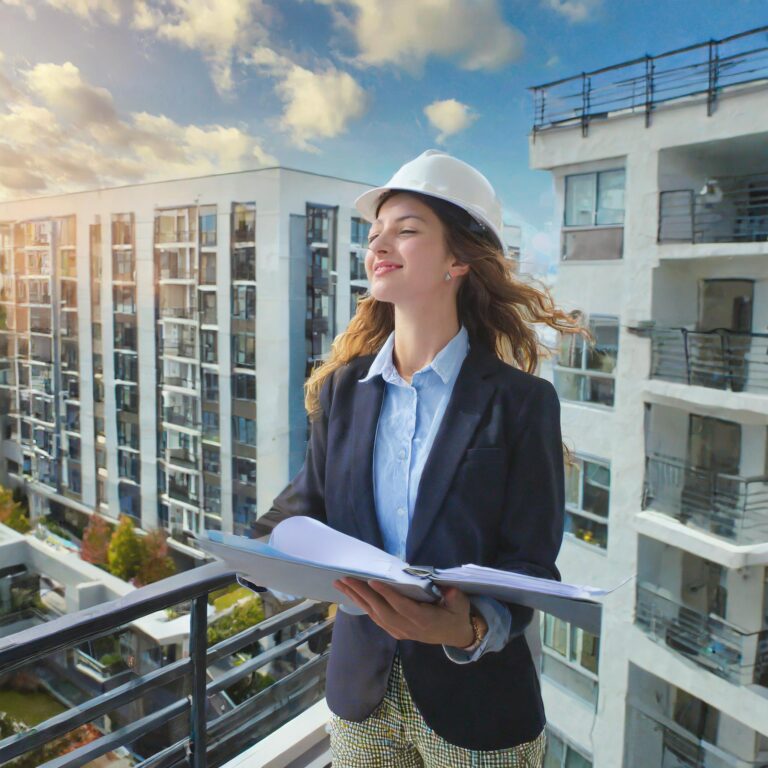How to Get Compliant:
SB 326 Balcony Inspections

Table of Contents
Understand the SB 326 Requirements
- The requirements
- Who’s right for the job
- Getting everything ready
- What to look for
Develop a Repair Plan and Timeline
- Setting the time aside
- Making your community aware
- Keeping track of what’s been done
- Top questions & answers
The California State Legislature recently passed Senate Bill 326 (SB 326), which requires regular inspections of deck balconies and walkways in certain multi-unit residential buildings. The goal of this law is to improve safety and prevent tragic incidents like the 2015 Berkeley balcony collapse that killed 6 people.
If you own or manage a multi-unit residential building in California, you must comply with the SB 326 requirements before the January 1, 2025 deadline. Here’s a step-by-step guide on how to get your building compliant:
Contact DrBalcony for a professional inspection!
Ensure the safety of your balcony and living space with DrBalcony - We're a Tech Engineering firm that specializes in California SB326 & SB721 balcony inspections. Over 300+ completed projects in California.
Request A Free EstimateClick To CallUnderstand the SB 326 Requirements
SB 326 applies to multi-unit residential buildings that are 3 stories or more and have deck balconies and walkways 6 feet or more above the ground. The law requires these buildings to have a licensed structural engineer or architect conduct a thorough inspection of all exterior elevated elements (EEE) every 6 years.
Key Requirements of SB 326:
- Inspection of all load-bearing components, connections, and physical condition of EEE
- Inspection must be conducted by a licensed structural engineer or architect
- Inspections are required every 6 years
- Building owners are responsible for scheduling, hiring inspectors, and completing repairs
- Failure to comply can result in fines and penalties

Hire a Qualified Inspector
The first step is to hire a licensed structural engineer or architect who is qualified to perform the inspection required by SB 326. When interviewing potential inspectors, consider the following:
Qualifications to Look For:
- Experience evaluating multi-unit residential buildings
- Strong understanding of SB 326 requirements
- Ability to provide a detailed inspection report
- Competitive pricing compared to other firms
Prepare for the Inspection
Once you’ve hired an inspector, work with them to prepare for the site visit. This may involve:
Preparation Tasks:
- Providing building plans, maintenance records, and other relevant documentation
- Ensuring all EEE are accessible for the inspection
- Notifying tenants about the upcoming inspection and gaining their cooperation
- Clearing any obstructions or debris around the inspection areas
Review the Inspection Report
After the on-site inspection, the inspector will provide you with a detailed report outlining their findings. Carefully review the report and work with the inspector to understand the severity of the issues and the timeline for completing the required work.
Key Elements of the Inspection Report:
- Identification of any deficiencies or safety issues
- Recommended repairs or maintenance
- Prioritization of critical issues that must be fixed by the January 1, 2025 deadline
- Longer-term maintenance and repair recommendations
Develop a Repair Plan and Timeline
Based on the inspection report, create a detailed plan and timeline for completing all necessary repairs and maintenance. This should include:
Repair Plan Components:
- Prioritizing the most critical issues that must be fixed by the January 1, 2025 deadline
- Obtaining bids from qualified contractors to perform the work
- Scheduling the repairs in a logical sequence to minimize disruption to tenants
- Budgeting for the full cost of the repairs, including any unexpected issues

Communicate with Tenants
Throughout the inspection and repair process, it’s important to keep your tenants informed and involved. Notify them in advance of the upcoming inspection and any planned repair work, and provide regular updates on the progress and timeline.
Tenant Communication Strategies:
- Explain the importance of the SB 326 requirements and how the repairs will improve safety
- Address any tenant concerns or questions
- Encourage tenants to report any issues or concerns they notice with the EEE
- Maintain open communication to ensure a smooth and cooperative process
Monitor Ongoing Compliance
Even after the initial SB 326 inspection and repairs are complete, building owners must remain vigilant about ongoing compliance. This includes planning and budgeting for future re-inspections every 6 years, as well as proactively monitoring the physical condition of the EEE on an ongoing basis.
By following these steps, you can ensure your multi-unit residential building is fully compliant with the SB 326 balcony inspection requirements before the January 1, 2025 deadline. Taking a proactive approach now will save you time, money, and headaches down the road.
FAQ Section: Top Questions & Answers
Q1: What is the difference between SB 721 and SB 326?
SB 721 applies to apartment buildings and multifamily housing, while SB 326 applies to condominiums and other common interest developments. The key difference is the sample size required for inspections – SB 721 requires a statistically significant sample, while SB 326 does not specify a sample size.
Q2: What is the deadline for the initial inspections under these laws?
The initial inspections must be completed by January 1, 2025 for existing buildings. Subsequent inspections are required every 6-9 years thereafter.
Q3: What are the consequences for not complying with SB 326
Failure to comply can result in fines and penalties. Additionally, if a building element fails and someone is injured, the building owner/HOA could face severe liability.
Q4: How do the inspection report requirements differ between SB 326 and SB 721?
SB 326 requires the inspection report to be incorporated into the HOA’s reserve study, while SB 721 does not have this specific requirement. SB 721 also mandates that the inspector notify the local jurisdiction if they identify any immediate safety threats that the owner refuses to repair.
Q5: Who can help building owners/HOAs comply with these laws?
Specialized engineering firms like DrBalcony that have expertise in evaluating exterior elevated elements and guiding clients through the inspection and repair process are recommended to ensure full compliance.
